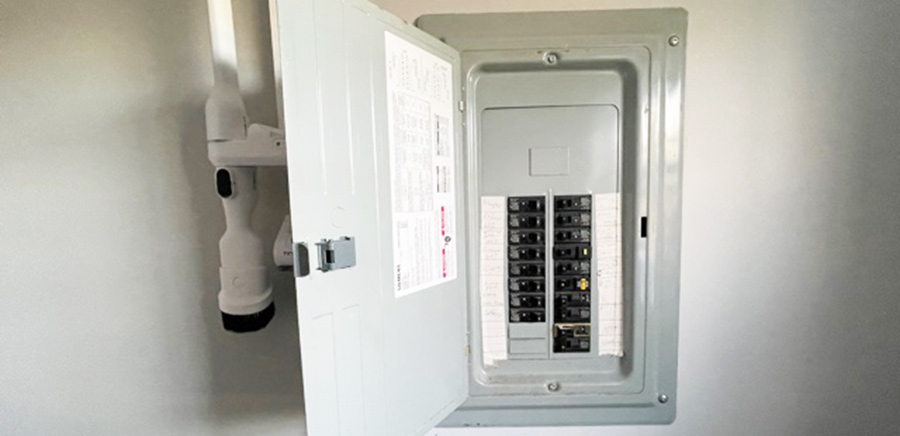


Have you ever had your electronics destroyed by an electrical mishap? If you haven’t experienced it firsthand, you’ve probably heard of electrical fires reported in the news. You can stop nearly all of these accidents by installing the appropriate circuit breaker and wire size. So how do you determine the proper breaker and wire size that you need for your appliances?
To determine the breaker and wire size you need, divide the total watts by the voltage to find the amperage on the circuit. You can use a breaker and wire size ampacity chart to calculate the breaker and wire size you need. Each breaker size requires a different wire size based on the breaker’s ampacity. Hence, you can choose the correct breaker and wire size you need based on amp requirements.
If you don’t know how to do the calculations, worry not. Read on for an elaborate illustration of determining the perfect breaker and wire size.
Having a circuit breaker is a fundamental requirement by the National Electric Code. The Institute of Electrical and Electronics Engineers (IEEE) also advocates using the proper breaker size. All commercial, residential, and industrial electrical circuits must have circuit breakers for safety. The rationale behind this requirement is to prevent electrocution and electrical fires outbreaks.
Nonetheless, not you can use any circuit breaker in any circuit. For guaranteed safety, you must use the correct size depending on the specifications of the appliances and electrical currents.
For the proper size of the circuit breaker:
Total Watts / Volts = Amps
Most of the electronics used in residential circuits require 20 amperes. Therefore, a circuit breaker of this ampacity is ideal for residential circuits. Nonetheless, you can also use larger ones depending on the appliances. Also, note that the circuit breaker’s amperage on the handle.
Your aim should be to operate appliances at a safe load, a maximum of 80% of its capacity.
Therefore, multiply the circuit breaker’s amperage by 80% to obtain this limit. You can still have a circuit with devices superseding the safe load. Nonetheless, you must be keen that this happens for a short period. Otherwise, you will jeopardize the system’s safety and risk blowing the appliances.
Let’s assume if you have 2 x 60-Watt Lights, 5 x 75-Watt lights, and 3 x 100-Watt lights you want to install
Case scenario: Consider a residential lighting circuit totaling 795 Watts using a single-phase 120V power supply. What is the ideal circuit breaker of such a circuit?
795 Watts / 120V = 6.625 Amps
Solution: The Circuit Breaker size should be at least 125% greater than the circuit’s current. Hence circuit breaker size of 15 amps is more than sufficient.
6.625 Amps x 1.25 = 8.28125 Amps
When electricity enters your house, it passes to the breaker box. Typically, most household appliances use a small current of approximately 20 amp. Such a circuit requires a circuit breaker to control the flow of electricity. The larger the current demands of the appliances, the larger the breaker and wire size requirement.
The circuit breaker and the wires supplying the current are one unit. The circuit will trip if you pass a current greater than the resistance of these components. With excess current, you can expect the wires to weaken and melt.
Once they are exposed, there is a risk of a fire outbreak. Here is where the circuit breaker becomes necessary.
The circuit breaker and the wires work in tandem in regulating the amount of current that passes in the circuit. When the electric current is below the circuit breaker rating, the circuit breaker allows passage of the electricity.
However, when the current rises above the circuit breaker rating, the circuit breaker trips, resulting in the disconnection of electric current flow. Thus, the appliances on the system are protected from damage by the circuit overload.
The fundamental standard is choosing a circuit breaker with a 25% higher current size than the circuit’s current. For example, if a circuit carries 40 amp, a breaker of a similar rating will flip at 40 amp. Thus, if the appliances need 40 amp, a circuit breaker will not be possible. Therefore, you need a higher-rated breaker.
Nonetheless, it would be best if you did not use an extremely high-rated breaker as this will jeopardize the functioning of the applied components. For example, if you have a circuit carrying 40 amp, it would be wrong to use a 100 amp breaker. Such a circuit breaker would not protect the circuit from an overload. It can result in a fire accident as the wires will melt when the current passes the 40 amp limit. Also, you can damage appliances if the breaker is significantly oversized.
You also need to get the wire size right regardless of the circuit breaker size you are using. Wire size is significant as it determines the electricity flowing through the system. It also determines the resistance of the wires to the amount of electricity that passes through.
To calculate the wire size and wattage, you first need to identify the wire’s American Wire Gauge (AWG). AWG is a standard measurement of wire size provided by global standards body ASTM International. Also called the gauge is typically a measurement of the wire’s diameter, the standard measure of the correct wire size for a circuit breaker.
You also need to understand wire size. For instance, note that AWG measures from high to low. The higher the gauge number, the smaller the wire size. A thicker wire will undoubtedly withstand a high ampacity compared to a thinner one.
Also, during calculations, you need to interpret the wire size ampacity chart accurately. This table provides the best AWG versus the maximum ampacity you can use with the breaker.
Here is a simple wire size chart for American Wire Gauge (AWG) you can use: